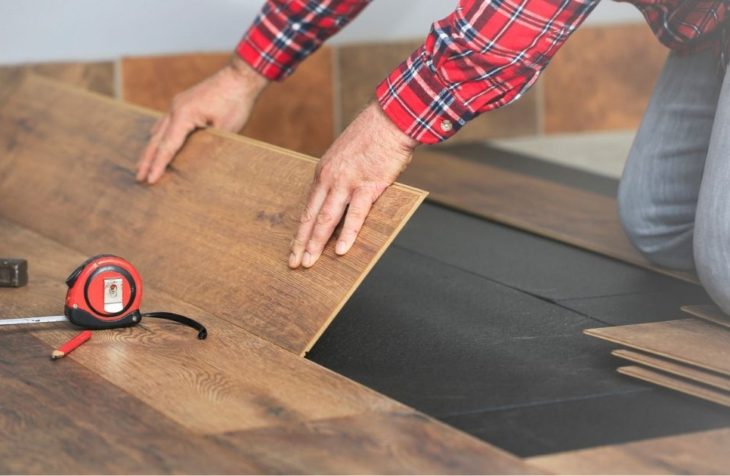Cozy home flooring material options
Picking your flooring is an important decision you’ll make for your home. You get to live with it for a long time, but it is also the foundation of your design and style. Your flooring should be functional to your needs and lifestyle.
Before we get into the key characteristics of different types of flooring, I highly recommend that you visit the shops and see the materials because they look very different from the photos.
1. Hardwood offers flexibility, style, and durable
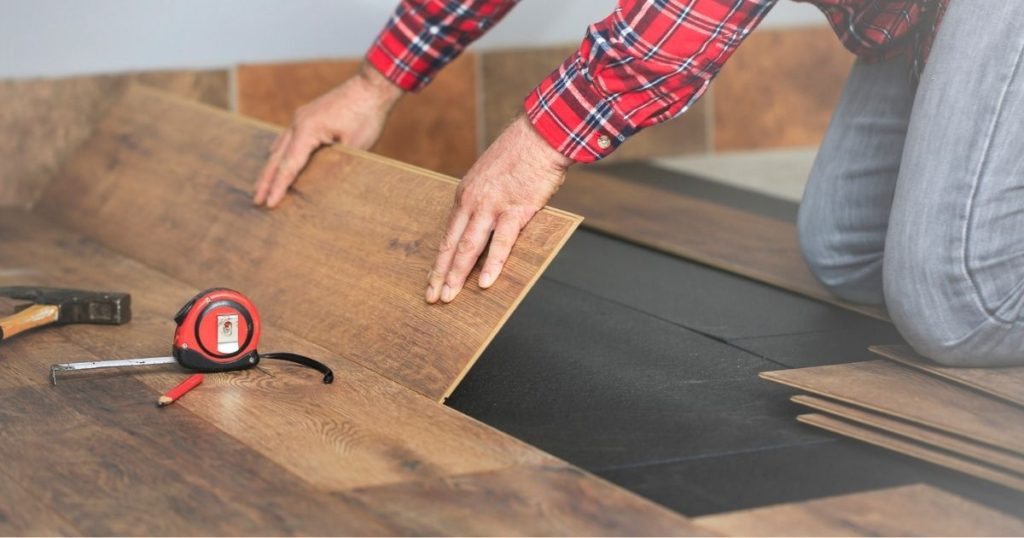
It is classic, inviting, can warm up any place, and is a traditional favorite. Most people love it for its natural beauty and durability.
Oak is the most popular choice, but other woods like Marple, cherry black walnut and imported exotic woods like Brazilian cherry are available in the market today.
Hardwood floors come in various styles, including plank, parquet, and pre-finished boards that you can install yourself. Standard planks are about 2 to 4 inches wide but if you have a larger space, specify a larger plank to feel more proportional to the size of your space.
Nowadays, new technology provides coatings for pre-finished hardwood with additives that produce super durable and incredibly tough surfaces.
The pros are that there is a variety of hardwood available today. Which blends with so many interior design styles, especially for an open concept floor plan.
Thus a continuous flooring throughout the home. Which provides visual continuity with no transitions and line breaks and makes a space seem larger.
Another pro is that it could be refinished many times over its lifetime. Through painting it into any color you want or sanding it down. One con is that solid hardwood is nailed to the subfloor, so it’s not easy to change it.
You would have to demolish the entire floor and prep it for a new floor. Being a solid wood makes it not impervious to temperature and climate changes. Water, heat, and humidity can warp the wood. Therefore not suitable for areas with high humidity.
Another con is that it is expensive. From the material costs with the exotic varieties running up higher. And the additional cost for installation.
2. Engineered wood for easy DIY projects
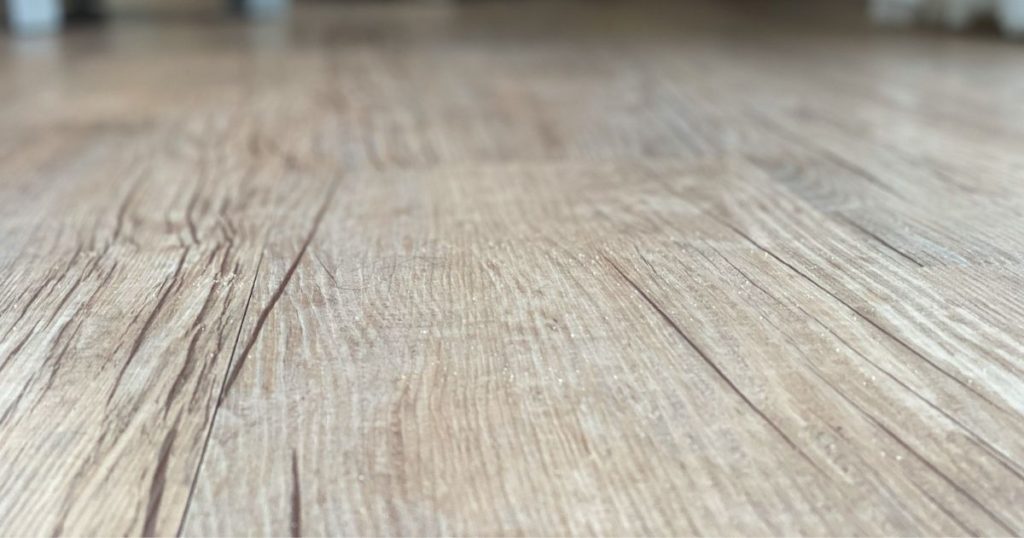
Features a top of veneer of real wood backed by layers of cheaper plywood. This type of construction makes the flooring more stable and less susceptible to changes in temperature and humidity, unlike solid wood.
Instead of plywood backing, some newer varieties have substrates made from recycled wood fiber mixed with stone dust. Which provides extreme dimensional stability. Making it a good idea for kitchens and basements. As well as for installation over floor heating systems.
Installation is through nailing, use of glue, or as a floating floor over a cushion pad. More manufacturers produce the self-locking or clickable type, which installs without glue or nails. They come as planks or parquet squares and do well as DIY projects.
The pros of engineered wood are that it’s durable, stable, and comes in various options to match your style. Changes in temperature and climate will not warp the plank. Also, it can be installed directly over an existing floor substrate.
One of the biggest cons is that it’s expensive, just like solid hardwood.
3. Bamboo for the eco-friendly minds
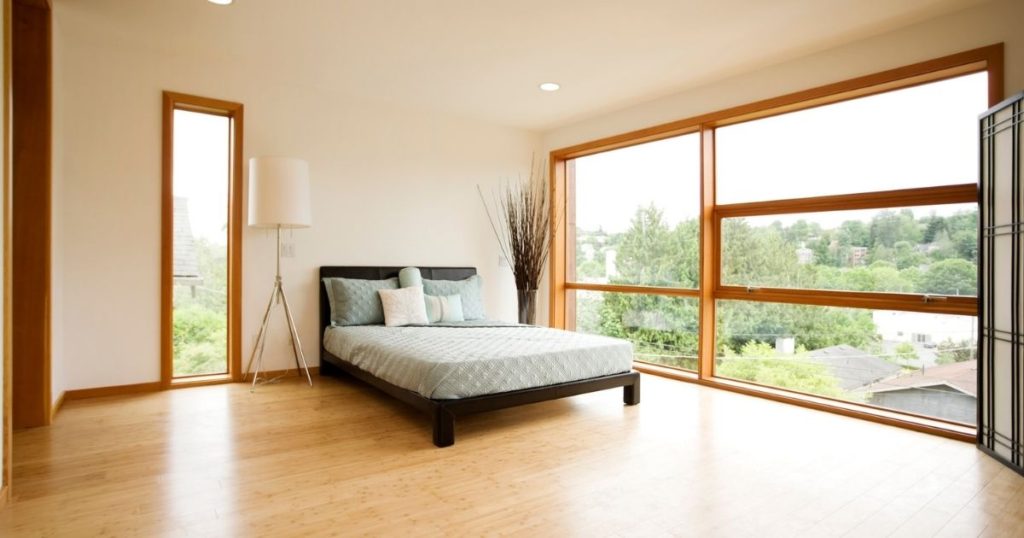
Has become an increasingly popular choice because of its similarity to hardwood. The only exception is that it is made of grass strands that are glued together to form solid strips or engineered planks with groove joints.
It comes pre-finished with grain patterns that include flat or vertical and woven. Flat screens display their intermittent growth nodes characteristic of the grass, whereas vertical grains pack the strands closely together to produce a fine-grained appearance. Woven types are woven. They have threaded situated patterns.
The pros to bamboo are that it grows, regenerates itself, is tough as steel, and is durable. While resisting swelling and contraction caused by high heat and humidity. Because it comes from plants that are easy to grow and regenerate quickly, it’s considered a sustainable, environmentally friendly material.
It is grown in controlled force and can take three to five years to reach maturity compared to hardwoods which can take a century to reach maturity.
A con is that even though bamboo is sustainable, most are imported. So, you need to include the transportation and importation costs. While considering whether or not bamboo is a good choice for you, expect to pay per square foot for flooring plus installation costs.
4. Laminate flooring option as a cheaper option than hardwood
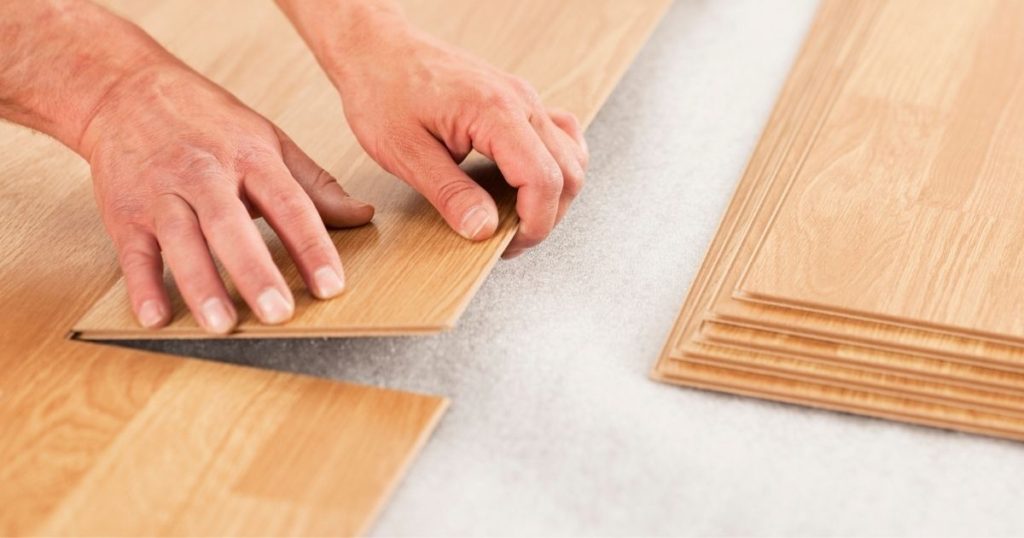
They get their name from being composed of different wood-based materials that are laminated together, then topped with a wood grain photographic imprint on the face of each board. The more variation in the photo-realistic prints, the more realistic the floors look when laid down. They are also easier to install than solid hardwood and are much less expensive.
Like engineered wood, it is backed by layers of plywood or compressed fiber backing that is extremely stable. The big difference is that the top layer is not real wood, but a plastic coating applied over a photograph. The photo-realism technology used produces look-alike finishes to real wood or other materials such as stone, ceramic tile, or even stained concrete.
The pros include the availability of various styles, colors, and patterns. Very easy to install, cost-effective if you are on a budget and low maintenance. Most of them are floating floor systems, installed directly over old existing flooring without glue or nails hence no tear-out. They come in planks or tiles and make a very popular DIY option.
A major con is that it warps when water sits on it. It is also not the best for pets and plants because once it has stained and you take some time to clean it, it warps and can only be fixed by taking it off completely. If you are budget conscious, this is the best option.
5. Linoleum for areas with a lot of foot traffic
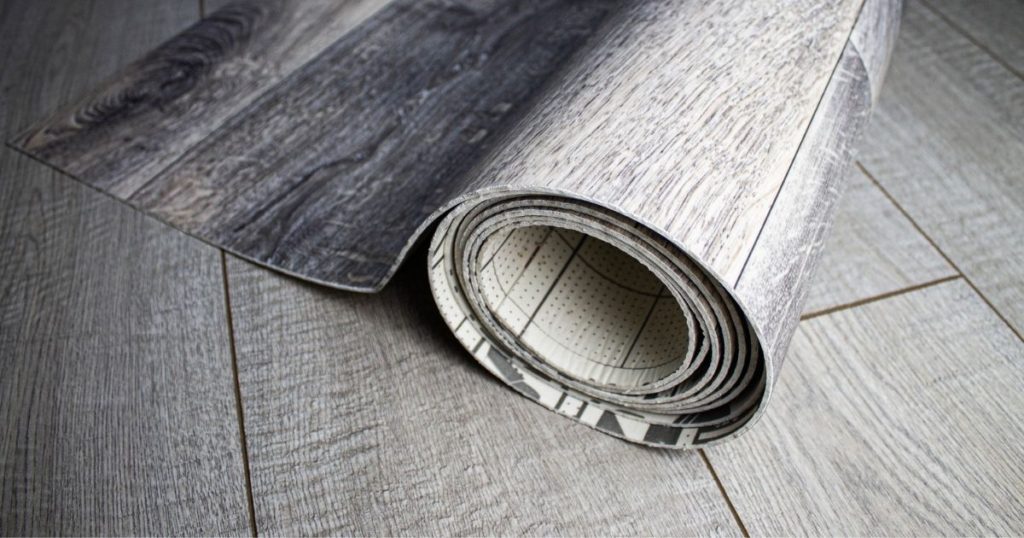
It is increasingly gaining popularity because of its eco-friendly features.
With all-natural, renewable, biodegradable materials, including linseed oil and corn.
Mineral pigments are also added to produce rich, vibrant colors. It produces no harmful vapors and comes designed for glue-down installation, as laminated planks and tiles are installed as floating floors.
Most manufacturers provide a protective coating that prevents staining and helps the product stand up to much foot traffic. If there is no protective coating, linoleum should be refinished every two years.
The pros are its durability and withstanding a lot of foot traffic. Also, low maintenance, all you need to do is sweep it up or mop it to keep it clean and dust-free.
As well as a very versatile flooring option with all sorts of colors, patterns, and styles to choose from. They are most often used in commercial settings like hospitals and schools, but they make a huge comeback in homes.
One of the cons is that it is more susceptible to damage from water and cleaning products being all-natural. Since it comes in sheets or tiles, they must be sealed directly after installation and periodically re-sealed.
If the maintenance is skipped, the floor loses its water resistance quality and then curls curl up at the edges. Remember that linoleum is water-resistant but not waterproof.
6. Cork flooring for sound absorption
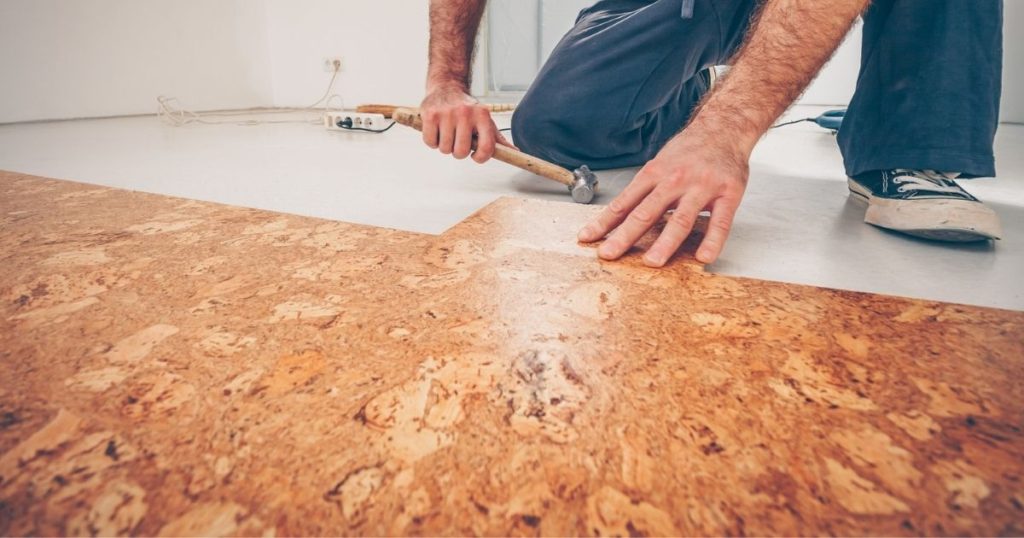
Its origin is from the bark of a tree harvested every eight to 10 years. It is considered a sustainable material since it is never destroyed and can regenerate to be harvested repeatedly.
The appearance is warm and comfortable underfoot. It also has a unique grain pattern with speckles and a honeycomb-like cellular structure.
It’s very much like the cork coasters if you have them in your home but they come comes in larger tiles or planks with a laminate construction.
The pro is that it is sustainable, absorbs sounds and vibration, and bounces back in case it is accidentally dented. It has a non-slip surface in wet areas like kitchens and bathrooms.
One of the cons is that it mostly comes pre-finished and they need to be resealed every couple of years to guard against stains and help seal out moisture.
Non-toxic water-based polyurethane and wax are good sealers. It is either glued down or installed as a floating floor.
7. Ceramic tile for an easily customizable flooring
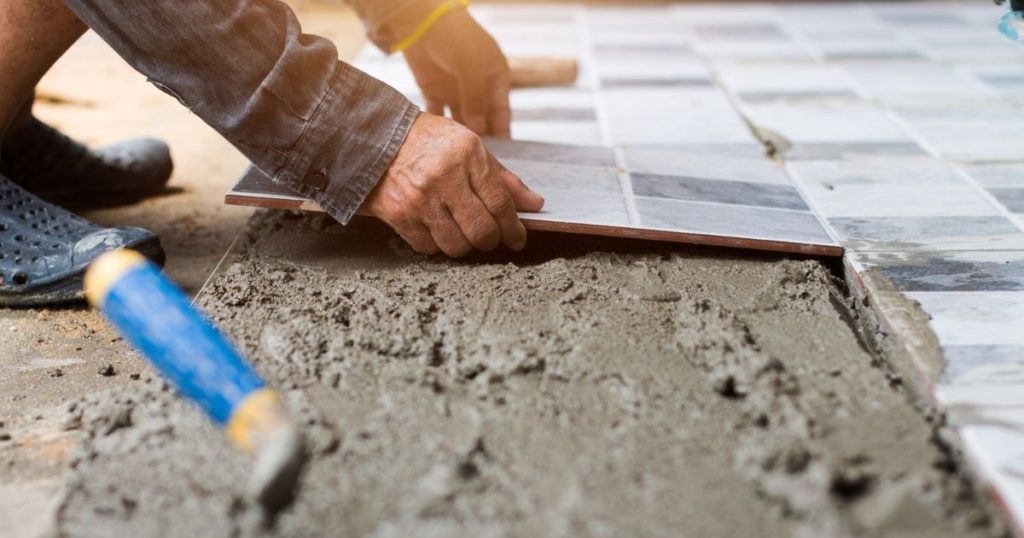
Ceramic tile is the most popular choice for kitchens and bathrooms if you are on a budget. There are so many shapes, sizes, colors, and textures of ceramic tile that make it easy to create a customized look.
The cost varies widely, and if you factor in the complementary decorative trim pieces and mosaic inlays, the cost quickly rises. The ceramic tile is made from a mixture of clay and shale baked and hardened in a kiln. The dry pigments are then made into a variety of earthy tonal colors.
Ceramic tiles come in one of four basic types. The glazed ceramic tiles with a polished coating give the tiles an unlimited variety of colors and textures. The material is virtually maintenance-free.
The quarry tile is an unglazed ceramic tile. Its color comes from pigments added to the clay mixture. It also has a slightly rough texture that provides a better slip-resistance than glazed tiles.
The porcelain tile is fired at extremely high temperatures. It is known to be hard, durable, resistant to staining, and great for outdoor applications. Available both glazed and unglazed.
Then the fourth type is terracotta, an unglazed tile with earthly colors and a rustic appearance. It is not quite as durable as other tiles and must be sealed periodically to prevent staining.
Always specify their purpose while buying because they are meant for walls and can be very slippery. The pearl of these tiles is that they are cost-effective and come in a variety of colors, patterns, trims, and accents. Since they are non-porous, there is no need to seal the ceramic tiles.
You can get creative with its application. It is water and weatherproof and can be non-slip if you specify the right type. In addition to that, it combines the beauty and hardness of natural stone.
Their con is that they can chip and crack if something heavy is dropped on them. And also stain if unglazed. However, great for high-traffic areas that get a lot of wear and tear.
8. Natural stone for a luxury feel flooring
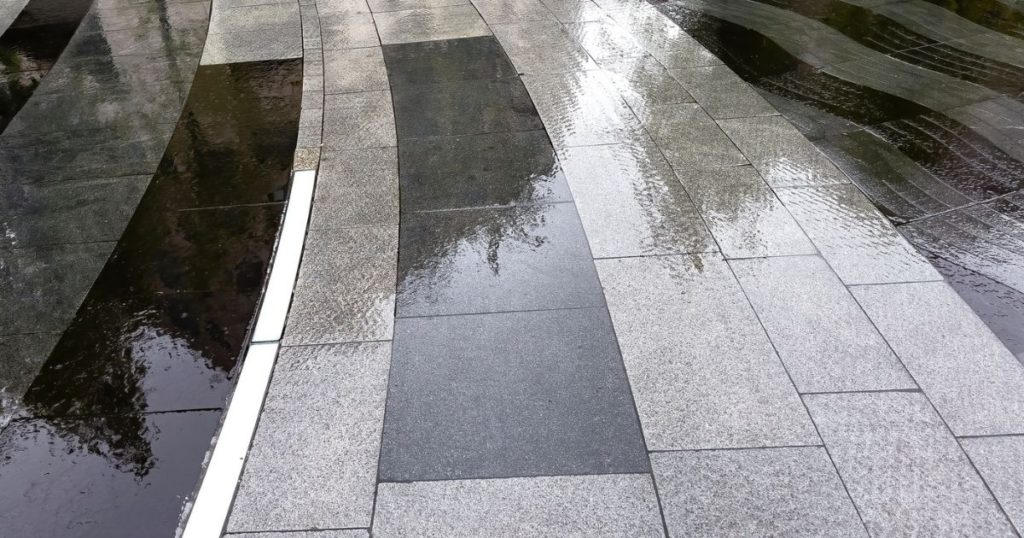
This is the flooring that provides quality and luxury at a premium price. Includes marble, granite, and limestone. There is nothing like it, and depending on your application, you can get very creative with it. In case of stains, polish it down and re-seal it if it’s a home or mat finish.
One of the major cons to natural stone is that it requires some maintenance. Softer stones such as sandstone and limestone must be refinished with a stone sealer every few years.
The harder stones, such as granite and marble should be sealed every four to five years. Since they are all porous, they can stain. Poonam Polish stone can be slippery when wet, so in this case, you want to choose a natural stone that has a little bit of texture to the finish, especially for bathrooms and kitchens.
9. Vinyl for floors that are always wet
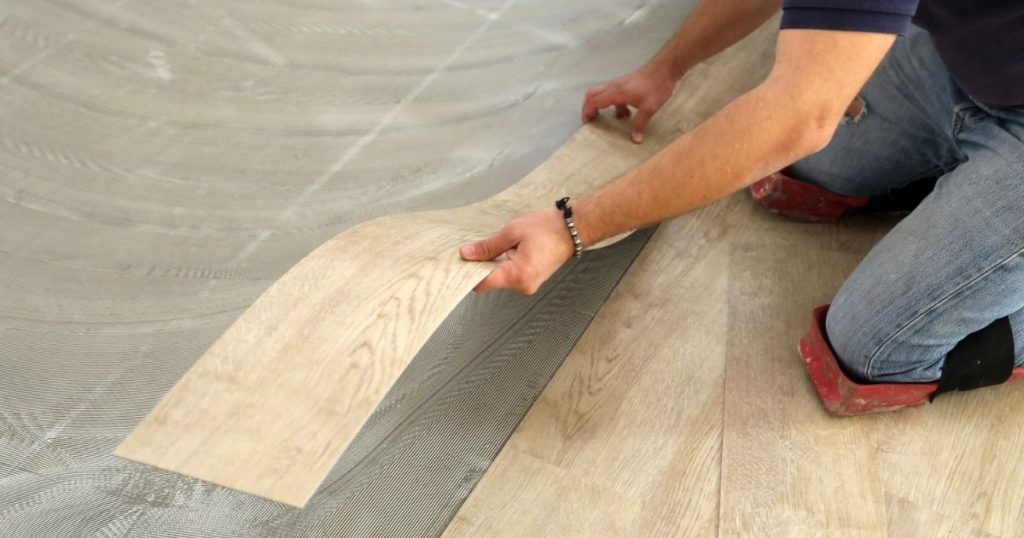
These sheets and tiles are considered resilient. They are soft and comfortable underfoot. Also, tough, durable, and maintenance-free. It comes in various colors and patterns at a really low cost with fewer style options.
The final products are backed with a layer of foam that offers extra comfort and safety. The thicker the vinyl surface is, the better the quality. The higher-priced ones can have a textured surface that looks like stone or wood.
The flooring has a wear layer on its upper surface that helps with stains and scratches. However, being a softer material than most laminate hardwoods and tiles, it can be punctured easily with a sharp object. Especially if installed in the kitchen.
A pro is that it’s waterproof and inexpensive. It’s a perfect DIY option and can be made to look like wood or stone. They are also very easy to clean.
Since its topcoat is impervious to water, it can be suitable for kitchens, basements, bathrooms, or any area with a lot of wetness. It also absorbs sounds, making it a lot quieter underfoot than tile or hardwood.
A major con is that vinyl emits volatile organic compounds, so it’s not green. They are hard to remove, especially when the adhesive has set in. Not being eco-friendly makes it difficult to recycle. And is usually used for a quick cosmetic facelift.
10. Concrete is durable and low-cost maintenance
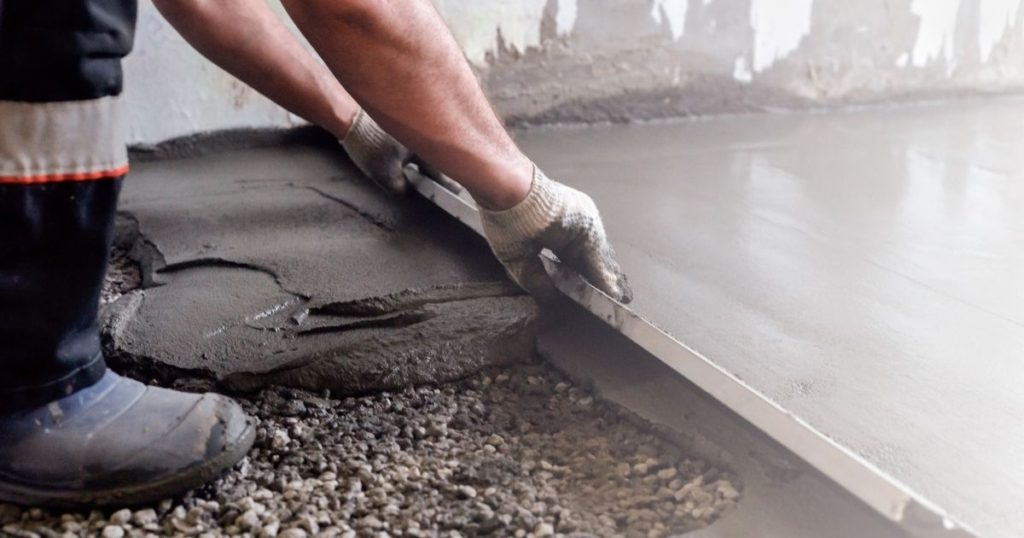
This is one of the hottest flooring options on the market today.
With a wide range of specialty products currently specialty currently on the market, plain and grey concrete can be stamped and stained to resemble polished marble stone brick or anything you desire.
There is no limit to the design possibilities. They are the real beauty of concrete floors.
One of the greatest pros of concrete is that it is long-lasting, durable, and extremely low maintenance. Making it the perfect flooring for radiant heat with no ground lines. And as a seamless floor, it is easy to clean.
One of the cons of concrete is that it could feel cold and take a beating but if you drop something super heavy on it. Also, the only way to repair it is by putting new concrete on top of it.
Choosing the flooring is a really big decision, and it’s always good to plan. Ask yourself, what is the function of the room? Who will be using the room? Do you have kids or pets? What vibe and look are you going for? And consider the amount of maintenance you can handle.
Make sure you pick up flooring that you love seeing throughout your home. And feel free to change the flooring from room to room.
